Text
Cosmic Justice Will Be Better
Criminal psychology doesn't begin at the scene of the crime, nor does criminal behavior (if you know what to *really* look out for). Why then are we behaving as though it does?
What a laughably ineffectual justice system we have.
0 notes
Text
Goodness
Goodness comes from innocence maintained with intent, not competence.
#stopPerforming
1 note
·
View note
Text
Cope
Men who deal with bullies by making themselves into one are exactly like the women who "deal" with "rape" by becoming rape fetishists. Neither of them deals with anything. Both are evil to the very core.
0 notes
Text
Freedom Fighter
The #1 quality that the freedom fighter lacks is the willingness to deny freedom to those who don't deserve it. Indeed, to most who fight in the name of "freedom", the idea of someone being unworthy is typically avoided and dismissed as blasphemy. Freedom is certainly our birthright, no?
Try handing out freedoms to your worst enemies and see how long it takes them to use that freedom against you.
Well... now someone has to define "freedom" as well as "worthiness", right? Yes, that is precisely the unavoidable reality of the situation. Eventually, someone will have to articulate these definitions precisely and we will all have to come to accept them as our consensus.
It may seem ominous when you think about it out loud like that but realistically, it shouldn't really be any more troubling than, say... ratifying a constitution.
We can't just go around dolling out freedom to those who can't handle being free. That's not even how the natural world functions. Nature is both conservative, and prohibitive. It's taken me over 30 years to fully realize and accept this as fact.
0 notes
Text
Polite Society
As much as I adore the idea of polite society, I like the idea of a society populated by genuinely polite people better.
0 notes
Text
God’s Perfect Plan? Another Look at Biblical Marriage
16 To the woman he said,
“I will surely multiply your pain in childbearing; in pain you shall bring forth children. Your desire shall be toward your husband, but he shall rule over you.”
17 And to Adam he said,
“Because you have listened to the voice of your wife and have eaten of the tree of which I commanded you, ‘You shall not eat of it, ’cursed is the ground because of you; in pain you shall eat of it all the days of your life;18 thorns and thistles it shall bring forth for you; and you shall eat the plants of the field.19 By the sweat of your face you shall eat bread, till you return to the ground, for out of it you were taken; for you are dust, and to dust you shall return.”
20 The man called his wife's name Eve, because she was the mother of all living. 21 And the Lord God made for Adam and for his wife garments of skins and clothed them.
22 Then the Lord God said, “Behold, the man has become like one of us in knowing good and evil. Now, lest he reach out his hand and take also of the tree of life and eat, and live forever—” 23 therefore the Lord God sent him out from the garden of Eden to work the ground from which he was taken. 24 He drove out the man, and at the east of the garden of Eden he placed the cherubim and a flaming sword that turned every way to guard the way to the tree of life.
- Genesis 3:16-24
The above is taken from the English Standard Version of the Bible. Religious or not, the story is worth noting as a means of understanding for just how long and to what extent these problems between man and woman have been with us.
In particular, notice how God intentionally curses Adam and Eve by directly degrading their mental wellbeing ("in pain"), as well as instigating the inevitable and ongoing conflict between the two ("Your desire shall be toward your husband, but he shall rule over you").
One has to wonder to what extent God's curse upon man has affected us in ways over and beyond what was originally capable of being relayed in Genesis. It is often suggested that the union of Adam and Eve is meant to demonstrate God's perfect plan for monogamous marriage between man and woman. Yet, if we examine the original nuclear family through the lens of modern psychology, a family of pure pathology is unfortunately revealed within the details.
1. Let's first begin by noting that man literally became a lesser species following the fall from Eden, as God degraded man's fundamental nature by encumbering Adam with the burden of working for survival, as well as amplifying Eve's pain during childbirth. This resulted in a fundamentally worsened man and a fundamentally worsened woman.
2. God further inflicts upon Eve her "nature", which is now to "desire" her husband and have him "rule over her". This pathological enmeshment to man resembles the codependent nature of abusive relationships between abandonment fearing borderline females and abandonment fearing borderline (or perhaps narcissistic) males. Also keep in mind that as the first humans on Earth, it would not only be inconvenient for Eve to leave Adam, it would be nye on impossible, further fueling the development of an insecure, anxious attachment style.
3. Being now cursed to work the land for sustenance, resource scarcity and competition against other species would also become major factors driving the increasingly neurotic lives and relational dynamics between Adam and Eve.
4. This competition for resources would extend to their children, starting with Cain and Abel who would now have to compete with one another for the attention and nourishment of their parents in a stressful, resource scare environment. This "sibling rivalry" would extend into their adult lives as both Cain and Abel were said to have made sacrifices to God for his blessings, with God favoring the sacrifices of Abel over those of Cain. This lifelong struggle for validation would likely have driven the development of sociopathic or psychopathic traits in both Cain and Abel.
5. In various religious traditions (namely Islam), an additional daughter is born to Adam and Eve named Acclima. It is said that Cain and Abel furthered their rivalry as they competed over Acclima's hand in marriage. It was this conflict that drove Cain to murder Abel, and as such, Cain's pathology would have taken another step towards pure psychopathy. It is also worth noting that this would have made Acclima the first ever bachelorette, and suggests that she might likely have stoked the rivalry between Cain and Abel, favoring the victor of their competition as he would have presented the best opportunity for continued survival and reproduction- a phenomenon displayed in women to this day known as hypergamy. This would have, at the very least, given her the feeling (if perhaps not the reality) that she had chosen the right man, given her limited options. Considering that she's now becoming intimate with a murderer, one would also have to add hibristophilia to her growing list of pathologies, along with the BPD and codependency she would have unquestioningly learned from her mother. I won't go too much further into the "war brides" phenomenon here, but if you're interested in taking a deeper look into how conflict uniquely pathologizes women sexually, have a look at this wonderful analysis on youtube from Stardusk.
6. After Abel's death, Seth was born to Adam and Eve along with another daughter named Azura, who became the wife of Seth. In the case of both Cain and Seth we see the development of two additional pathologies- An Oedipal complex (as both men desired the literal daughters, and thus the feature set, of their own mother), as well as incestuous marriages to their sisters (as there were none else readily available to marry). If you are familiar with the phrase "every man marries his mother", the stories of Cain and Seth demonstrate not just the underlying pathologies behind that seemingly innocuous euphemism, but also approximate something like the philosophical origins of the psychological tendency to inbreed.
As we now understand the underlying nature of "every man marries his mother, every woman marries her father", we might also draw the conclusion that inherent in every man and woman's marital instincts, are also the inherited marital pathologies that were present in the original instincts towards marital inbreeding.
I mention all this not to denigrate the institution of monogamous marriage, but rather to draw attention to the substantial litany of problems that were inherited from the initial marriages between man and woman. Understanding this, the institution that is often argued to demonstrate God's perfect plan appears to come with problems that either obscure its perfection, or are indicative of its inherent imperfection. Either way, it would be foolish to assume that man is then designed perfectly for this sort of relationship, but is rather, at the very least, innately in need of premarital training. Historically, culture would have done its best to serve this training function, but in the 21st century, we are increasingly finding ourselves in a world apparently intent on dismantling the traditional marital subcultures.
This cultural destruction, however, may come with a silver lining, as the underlying psychological issues destabilizing traditional marriage are now being exposed for what they've truly been all along! In nature, the process of speciation via adaptation is often used to ameliorate the effects of evolutionary inbreeding, by increasing the genetic variation present in a population via some evolutionarily advantageous mutation of the individual. It is my suspicion that deep within the collective unconscious of man is the dormant psychological imperative to resolve the initial pathologies of monogamous union by way of some form of ultimate psychological speciation, effectively returning man to the original, perfect, pre-fall human species. With humanity apparently approaching another evolutionary apex, and considering also the technological benefit of relative material luxury in limiting our burden of survival, it would not at all be surprising that now might be the time in history that this dormant psychological imperative would choose to attempt its long awaited resolution (ever heard of genetic memory?).
Again, whether you are religious or not, a pervasive history of inbreeding is still very much uncomfortably at the crux of both our genetic and psychological history.
It might now also be worth noting that for generations, people have mistakenly argued over the potential of there being some conflict between the theory of evolution and the Bible. By taking a psychological perspective, I hope you realize what we've begun to do here.
From here we can understand the most pressing issues needing attention when attempting to remediate the destruction of our traditional marital subcultures. Any proposed remediation which does not take the resolution of these unconscious pathologies into consideration cannot be said to have developed a philosophy robust enough for sustainable marital union, as the underlying pathologies present from the dawn of mankind would simply remain obscured and unresolved!!!
That said, don’t trust anybody dolling out marital advice who cannot also help you recover from the following:
Enmeshment
Codependency
Abandonment fears
All Cluster B Personality Disorders (BPD, NPD, ASPD, etc)
Anxious attachment
Perceived resource insecurity (as opposed to genuine resource insecurity)
Compulsive, validation seeking, competitive motivation
Hypergamy
Hibristophilia
Oedipal motivations
Instincts to inbreeding and incest
Good Luck...
https://www.temptations.chat/
7 notes
·
View notes
Text
Shapeshifting Eye-deas
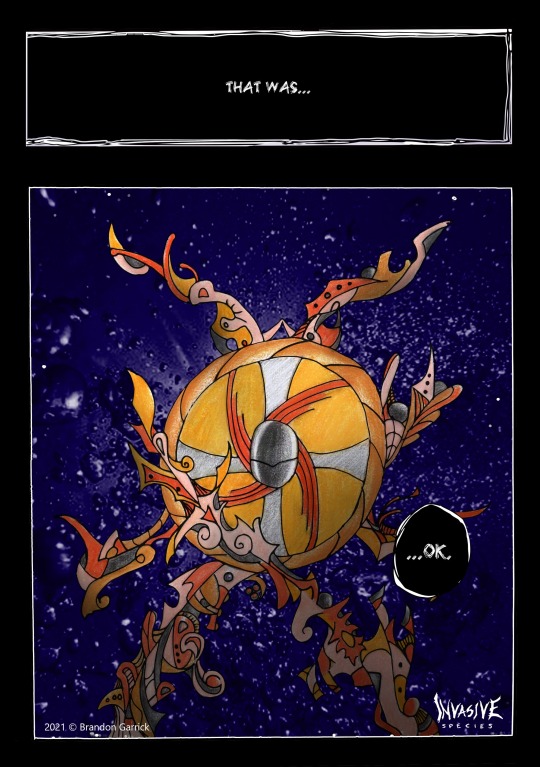
- From Invasive Species, Ch. 5 “Shapeshifting Eye-deas”
Read Here: https://www.theduckwebcomics.com/Invasive_Species/5658368/
youtube
0 notes
Text
On the Greek Origin of “Species”
Idea = Species
The above equation has truth in the formal study of philosophy, even though colloquially, this is not generally taken to be the case.
Let’s start by examining the etymology. The word idea, as it turns out, is simply a feminine form of the root word eidon from ancient Greek. With this in mind, it’s specifically the history of the neutral form eidos that will uncover the association to the modern species.
The story begins with the Greek philosophers Plato and Aristotle, who were two of the most influential historical figures in establishing the foundations of modern philosophical reasoning. While the Greek terminology have their own original meanings, their specific usage is often tailored individually by these two philosophers depending on the subject of interest across their works. As such, both men can be said to have contributed significantly to the practical definitions of such terms within the context of modern philosophy.
To understand then how eidos became species, we can start by separating Plato from Aristotle by their take on the Problem of Universals. The Problem of Universals starts by suggesting that universals are characteristics that ordinary objects or things are observed to have in common. As an example, consider a bowl of red apples. Each apple in the bowl will have several similar qualities, such as the color of "redness". Taking other qualities such as size, shape and texture into account, we can further conclude that all the apples in the bowl share the universal quality of "appleness". Both appleness and redness, as well as all the other minute shared qualities of the apples, can all be taken to be the universals that the apples hold in common.
When considering the concept of universals, the Problem of Universals poses three questions: (1) Do universals exist? (2) If they exist, where do they exist? And (3), if they exist, how do we obtain knowledge of them? Plato's solution to these questions is known as the Theory of Forms.
Plato's Theory of Forms
Plato's worldview suggests that the physical world is not as real or true as the timeless, unchanging and absolute Ideas (or Forms) that it is based upon. So universals in the Platonic worldview are essentially these "Forms". These Forms, are the non physical essences of all things, of which objects and matter in the physical world are merely imitations. Plato then suggests that there exists some immaterial "World of Forms", which is separate from the physical world, and is effectively, home to these ideal, timeless and absolute Forms. He also posits that these Forms are the only objects of study which can provide knowledge.
Aristotle's Theory of Universals
Aristotle on the other hand suggested that universals are both incorporeal and omnipresent, but only exist where they are instantiated, i.e. universals only exist in things. He also mentioned that a universal is identical in each of its instances- so going back to our red apples, all red things would be similar in that there is the same universal redness in each thing. There is then, no ideal Platonic Form in this theory. Rather, each instance of a thing carries a copy of the same universal property. Lastly, in Aristotle's world view, knowledge of a universal is not obtained from a supernatural source world, but rather gleaned from a consideration of its material form via an experience he termed active intellect (we will revisit active intellect later on).
To summarize, we can consider the image below:

Both the Theory of Forms and the Theory Of Universals attempt to consider the physical objects apart from the immaterial qualities that they possess. This way of analyzing the world is the fundamental reasoning underlying the branch of philosophy known as metaphysics.
Returning to the concept of eidos (ideas) as species, the Aristotelian study happens to be the branch that will reveal to us our link. To better understand Aristotles concept of species, we'll first examine his system of Logic, followed by his study of early Biology.
Species in Aristotle's Logical Study
Perhaps the best way to start in Aristotle's Logical metaphysics is to consider his general conception of potentiality vs actuality. With his Theory of Universals worldview in mind, you can think of the process of actualization as one in which things "move" from their immaterial potentiality (or potential to exist), to their fully existing material actuality (as an action, movement, object, etc). Interestingly, this process of actualization applies for objects as well as thoughts, with the actualization of thought providing the basis for his study of formal logic.
Logic, as a philosophical study, can be taken as the study of argumentation. In other words, it is the formal study of how we conceptualize and assert arguments, which are statements of what we conceive to be “real” or “true”. With this in mind, we can observe that the root of the word logic happens to be logos, which is the Greek term meaning "word"or "speech".
Aristotles central logical concept is the deduction or syllogism. He defines a deduction in his work Prior Analytics, as:
A deduction is speech (logos) in which, certain things having been supposed, something different from those supposed results of necessity because of their being so. (Prior Analytics I.2, 24b18–20)
Each of the “things supposed” is a premise (protasis) of the argument, and what “results of necessity” is the conclusion (sumperasma).
The core of this definition is the notion of “resulting of necessity”. As an example, consider that z results of necessity from x and y, if it would be impossible for z to be false when x and y are true. We could therefore take this to be a general definition of a “valid argument”.
Aristotle would use these logical principles to construct what he termed genus-differentia definitions. A definition in his metaphysics concerns itself with the notion that what can be "defined" is only that which has an "essence". As such, Aristotle's notion of a definition was to place every object into a family (or genus proximum) and then to differentiate it from the other members of that family by some unique universal (differentia specifica). All objects which follow a certain genus-differentia are what he termed as eidos (in Greek) or species (in Latin). As an example, "human" might be defined as an animal (the genus) having the capacity to reason (the differentia). Put differently, the definition of a human (species) is the two part “Animal (genus) that Reasons (differentia)”.
Aristotle’s genus-differentia species became the root of what is known today as binomial (two names) nomenclature (naming system), and is most notably used in the Linnean system of biological taxonomy.
To summarize, it may be helpful to think of the mechanisms of deductions and genus-differentia as Aristotle’s means of "moving" ideas from the "space" of potentiality to the "reality" of actuality. And while he doesn't really define this clearly, we can also think of this actualization process as that which underlies what was previously referred to as Aristotle's active intellect.

Species in Aristotle's Biological Study
Ironically, theres less to say about species as considered from Aristotle's biological study. That said, it would be remiss to explore this topic without noting that Aristotle was perhaps the first major contributor to pre-evolutionary Darwinian biology. Importantly, the term eidos does in fact repeat itself frequently within the biological study, where Aristotle sets out to erect his own animal taxonomy.
I mentioned in a previous article about the difficulties in modern taxonomy of separating species discretely. Essentially, the nature of animal species happens to be such that their differences are fundamentally continuous and arbitrary from one "species" to the next. A major demarcation of species in post Darwinian taxonomy is inter sterility, or the the inability of one population to reproduce with another. Aristotle however, is mostly uninterested in limited hybridization as a marker of eidos, instead attributing inter sterility to what he considered nonessential differentia, such as gestation periods and body size.
The essence necessary to define a true species, would then necessarily be defined by essential differentia. Rather than abstracting this essence from a collection of common characteristics among members, Aristotle instead focuses on those prime characteristics which are necessary for the existence of the species.
Thus large groups of animals are distinguished first by that which maintains their life (blood or some other fluid), and the "blooded" animals are distinguished by their mode of reproduction (vivipara, ovovivipara, ovipara). Other characteristics which Aristotle often uses for distinguishing the larger groups include location of “life” (water or land), means of cooling (i.e., respiration), type of food, method of locomotion, etc. The major distinctions between kinds of animals are all made in terms of the ways in which these animals carry out the functions which are necessary for life and for the continued existence of the species. From Aristotle's point of view, features which are conditionally necessary for life are most obviously their essential differentia.
Summary
To conclude, our link between species and ideas comes primarily via the ancient Greek eidos, as explored within the works of Aristotle's logical metaphysics and early biological taxonomy. It's worth remembering the process of the active intellect as that which takes all species in Aristotle's worldview from potentiality to actuality. Though it wasn't covered in this write up, there's reasonable evidence throughout Aristotle's works to also suggest that he considered this systematic way of thinking as consistent and applicable across several arenas of complex life, having applied a systematic approach to classifying everything from political systems, to pleasurable experiences. In the modern sense, this also makes Aristotle an early contributor to the mode of investigation known today as "systems theory".
References:
https://en.wikipedia.org/wiki/Eidos
https://en.wikipedia.org/wiki/Species_(metaphysics)#:~:text=For%20example%2C%20a%20human%20being,species%20in%20Aristotle's%20corpus.
https://en.wikipedia.org/wiki/Predicable
https://en.wikipedia.org/wiki/Aristotle%27s_theory_of_universals
https://en.wikipedia.org/wiki/Theory_of_forms
https://plato.stanford.edu/entries/aristotle-logic/#SpeGenDif
https://orb.binghamton.edu/cgi/viewcontent.cgi?article=1085&context=sagp
https://davesgarden.com/guides/articles/view/2051
https://plato.stanford.edu/entries/evolution-before-darwin/
http://www.fossilized.org/anthro_textbook/index.php?subtopic=Aristotle,%20Linnaeus%20and%20the%20Typological%20Species%20Concept&week=2&topic=Species%20concepts&topic_subdb=Species%20concepts&subfield=Evolutionary%20Biology
https://www.youtube.com/watch?v=B3Avpz-mXU0
https://en.wiktionary.org/wiki/%E1%BD%81%CF%81%CE%AC%CF%89
https://www.nybooks.com/articles/1970/04/09/plato/
https://www.researchgate.net/publication/249901495_Eidosidea_in_Isocrates
#aristotle#plato#species#theoryofuniversals#theoryofforms#philosphy#logic#eidos#genus#differentia#nature#ideas#darwin#evolution#taxonomy#greek#greece
1 note
·
View note
Text
Cardinal Skins
Note: As this post is primarily concerned with plumage, the referenced “skins” should be considered from the vocabulary of a video game, rather than avian physiology.
Not only do yellow cardinals exist, but they’ve also somehow mastered a variety of means for presenting naturally.
Exhibit A:
Gubernatrix cristata - (The "actual" Yellow Cardinal).
These birds belong to the family Thraupidae, making them mostly unrelated to the more well known family of Cardinalidae.

Exhibit B:
The Northern Cardinal with "xanthochroism".
This rare phenomenon is seen in a variety of animal species wherein red pigmentation is replaced with yellow. This typically results from a form of genetic mutation, but can sometimes be the affect of poor dietary conditions.
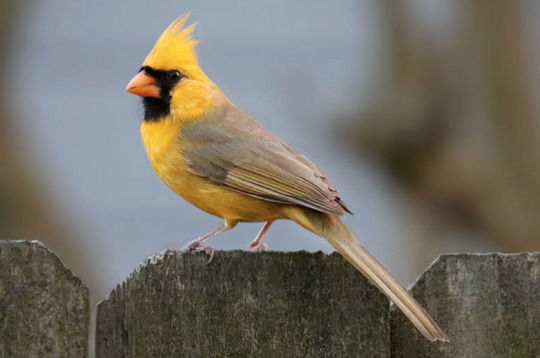
Exhibit C:
The Northern Cardinal with "gynandromophism".
Unlike hermaphroditism or intersex creatures (characterized by both or ambiguous genitalia), gynandromorphs are characterized by having both male and female cells throughout their body. In the case of bilateral gynandrmophs, the split between both genders is rendered evenly down the middle of the body. As Northern cardinal females are often more yellow in coloration, this can result in duotone gynandromorphs.
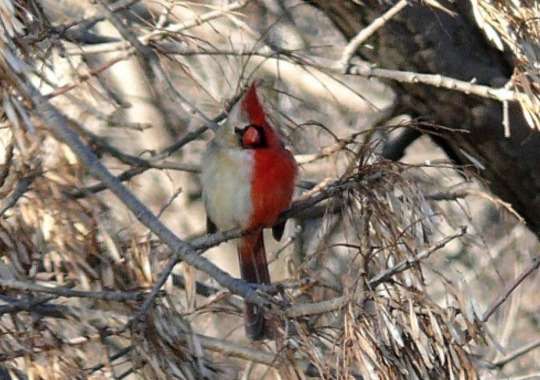
References:
https://www.audubon.org/news/why-northern-cardinal-yellow
https://www.nytimes.com/2019/02/09/science/cardinal-sex-gender.html#:~:text=Researchers%20believe%20that%20the%20cardinal,%2C%20reptiles%2C%20butterflies%20and%20crustaceans.
https://www.natureworldnews.com/articles/11524/20141230/split-sex-cardinal-loneliest-bird.htm
https://video.nationalgeographic.com/video/news/00000161-c4cb-dfea-a1ff-c4eb29880000
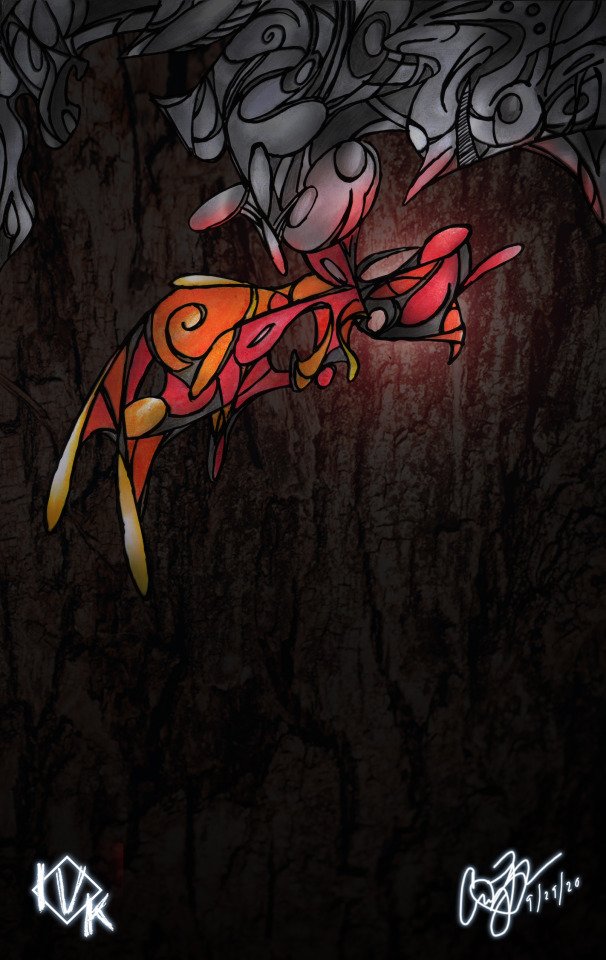
youtube
0 notes
Text
ZombiEland
Who’d of thought the meningeal worm culpable for the wildlife manifestation of ZombiEland?
The common eland, along with several of its ungulate relatives, are prone to contracting the neuro-parasite (or “brain worm") known as parelaphostrongylus tenuis.
While symptoms of the infection are sometimes mild or absent, more severe infections can lead to a peculiar behavior known as “circling”. Circling describes a motor abnormality, wherein, the eland repeatedly walks in circles in a zombie like state. The state of confusion and involuntary motor function are the result of lesions to the brain caused by the subdural migration of the P. tenuis parasite.
This particular phenomenon is not the only of its kind, and belongs to a young but growing field of study known as neuro-parasitology.

youtube
0 notes
Text
Mind Blown Capybara
A transcendent lightbulb goes off for this transcendently sociable Capybara. I say transcendent because only such a word could accurately describe a creature so chill it often defies basic self preservation.
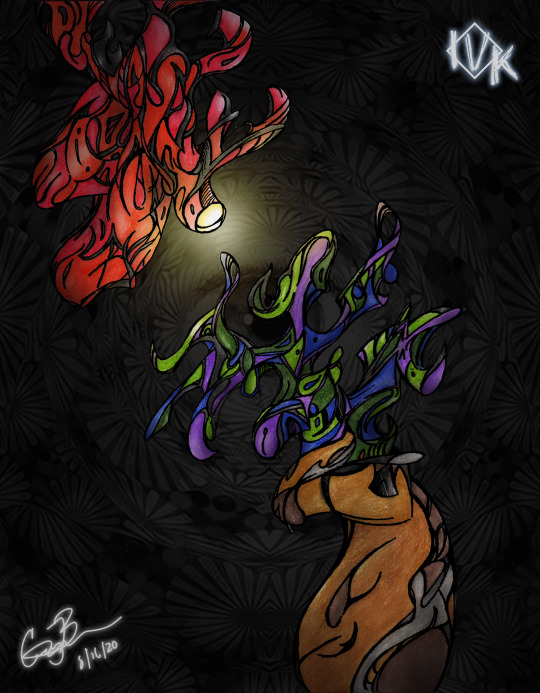
youtube
0 notes
Text
HOW CAN SHE SLAP?
The reference in this blog’s title has long since seen its hey day. That said, as the world continues to reminisce on the “essence” of it's decades past, remembering the VHS tapes of the 90’s, the poofy hair of the 80’s, and the flower power bell bottoms of the 1970’s, I hope the spirit of the 2000’s will at least lead a few to consider once again, “how could she slap”?
Regardless, hope for this meme’s ethos lives on, with the lion tailed macaques of Southern India stepping up as their countrymen's worthy, if not unlikely, conservators.
Such is the contest for the region's seasonal clutch of jackfruit, with the giant malabar squirrel playing the role of the quasi-parasitic-host opponent.
How so? Well on the one hand, the malabar squirrel's keen sense of smell is of great use to the lion tailed macaque, as it is able to sniff out ripened jackfruit from the otherwise inedible unripened lot.
The lion tailed macaque on the other hand, possesses no such means of discrimination.
Instead, the macaques simply lie in wait, as the squirrels scuttle about the trees, looking for ripened jackfruit. It’s at precisely the moment the viable jackfruit is identified that the macaques swoop in, supply the squirrels with a series of gentlemanly slaps, and claim the jackfruit for themselves.
Adaptation at its finest!
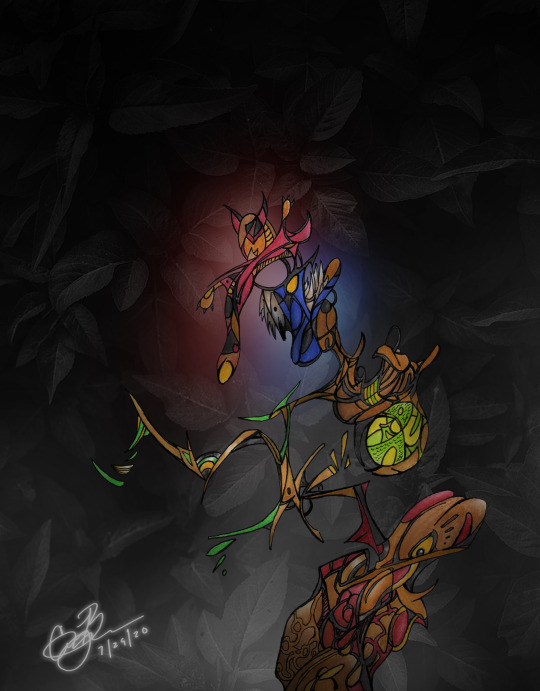
[How can she slap?]
youtube
3 notes
·
View notes
Text
Netflix and Krill (but then the krill ruins EVERYTHING)
You would think decomposing into "a gas called Nitrous Oxide (laughing gas)" was enough poop innovation for the Adélie penguin, but resting on such laurels could never earn one's species an honor like (the great) 2005 Ig Nobel prize.
To secure such an honor, the little penguins would toil further. And after quite literally keeping their heads down for generations, extolling the virtues of cleanliness over convenience for the sake of their young crèche, the Adelie penguins would emerge victorious with their most prized poop innovation yet: Explosive diarrhea.
In other words, in order to keep their nests (relatively) clean during brooding season, Adélie (and chinstrap) penguins will bend over and excrete projectile poo away from their eggs, with the poo reaching as much as 4.4 feet from... the point of ejection. A rectal pressure of roughly 3X that of the average human is required to do this (since you were wondering). Beyond cleanliness, the penguins poo this way in order to avoid vacating the nest, better protecting the eggs from the elements as well as predators, which on land, would include leopard seals.
Other notable aspects of the poo include its white and pink color (more white after eating fish, more pink after eating krill) as well as the fact that its trails have been spotted from space via satellite (in the case of the King Penguin).
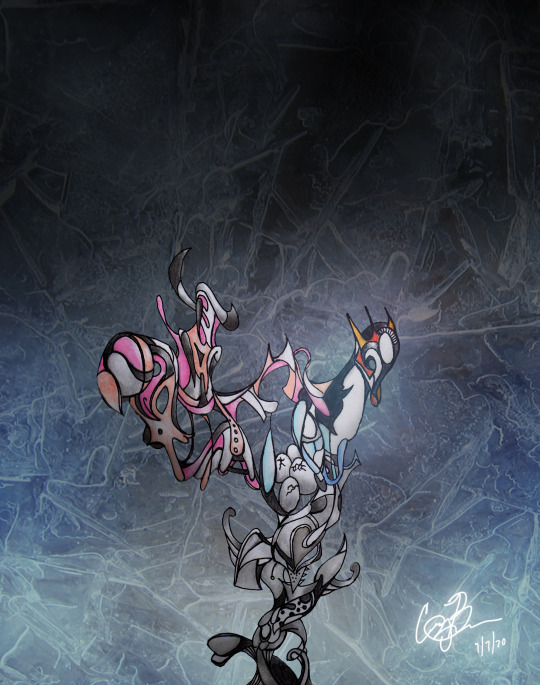
“Netflix and Krill“
*NOTE: I've taken some creative liberty here with coloration from both the King and Macaroni penguins*
youtube
#penguin#adelie#chinstrap#art#speedpaint#artists on tumblr#metal#metalhead#bring me the horizon#parasite eve#BMTH#leopardseal
0 notes
Text
Mad World
It’s sometimes interesting to consider the rather enlightened times we’re living in today. But is it a better world? Until this morning, I used to think so. That no matter what seems to be going on out there, the world we are living in today is infinitely improved over what it was even 10 years ago.
But when I remind myself of the suffering that has created this world (rising suicide rates, depression rates, homelessness rates, divorce rates, etc), as well as the ongoing feeling of difficulty in achieving what used to be considered the basic contentments of a “normal” life (a job, a home, some friends, a partner, some kids, etc), I wonder if this world is really better when it doesn’t necessarily feel better in the moment.
More likely, the world we are living in today is more efficient. Highly efficient. At what? At providing the individual with opportunities to become intimately connected with itself. Chronic isolation and social discontent have the ulterior benefit of doing this for us.
So perhaps whether or not this world is a “better” world, depends mostly on what the long term utility of being “intimately connected with the self” turns out to be.
Either way, what an incredible gift it might be to have had the privilege of developing such a historically inconceivable level of selfhood...
#mad world#globalization#social media#social distancing#new world order#optimism#pessimism#depression#divorce#existentialism
0 notes
Text
Keeping a Positive Platytude
PLATYPUS INGREDIENT LIST:
1 Duck bill, smoked
1 Beaver tail, stolen
2 venomous "spurs"(?), Located on their LEGS
4 webbed feet, the back 2 being purely cosmetic
1 gallon of milk from its MILK PRODUCING SWEAT GLANDS
1 Lord Raiden, because electroreception makes hunting more "fun"
I imagine when the platypus was undergoing the "questioning" phase of its creation, god simply laughed and left it to figure it out for itself.
p.s. Their milk has antibacterial qualities as well.

“Platypunk”
youtube
2 notes
·
View notes
Text
Black Swan
"Rara avis in terris nigroque simillima cygno" ("a rare bird in the lands and very much like a black swan") - Juvental
To quote wikipedia, "when [the above] phrase was coined, the black swan was presumed not to exist. The importance of the metaphor lies in its analogy to the fragility of any system of thought. A set of conclusions is potentially undone once any of its fundamental postulates is disproved. In this case, the observation of a single black swan would be the undoing of the logic of any system of thought, as well as any reasoning that followed from that underlying logic."
This saying was common in 16th century London, as an expression of impossibility. You can probably imagine the surprise then (among Europeans anyway) when Dutch explorer's first discovered black swans in the wilds of Western Australia in 1697.
It's certainly an interesting concept to consider. "Where there's smoke, there's fire" is phrase I often repeat to myself when trying to avoid assuming certain things "impossible". But in the case of the black swan, where exactly was the smoke? The existence of white swans doesn't necessarily suggest the existence of black swans- at least not anymore than it might suggest the existence of red swans. And yet, just like that, "a wild black swan has appeared!"
I sometimes wonder if the existence of improbable phenomena is somehow made more probable simply by considering the possibility. In other words, how can we prove, with certainty, that black swans didn't exist before they were observed by those Dutch explorers? And what psychological biases played into their assumed nonexistence? Were there, for example, non European cultures that had long held written or oral records purporting the existence of black swans? And If your'e familiar with the idea of "Last Thursdayism", you might notice the potential depth of this particular rabbit hole...
So how can we train our minds to see "black swan events" coming? This observer bias seems to be key, and is noted by the popular risk analyst Nassim Taleb in his modern conception of black swan theory. He states "what may be a black swan surprise for a turkey is not a black swan surprise to its butcher; hence the objective should be to 'avoid being the turkey' by identifying areas of vulnerability in order to 'turn the Black Swans white'."
What could this mindset mean from a more practical perspective? Again I defer to Taleb, who says "I don't particularly care about the usual. If you want to get an idea of a friend's temperament, ethics, and personal elegance, you need to look at him under the tests of severe circumstances, not under the regular rosy glow of daily life. Can you assess the danger a criminal poses by examining only what he does on an ordinary day? Can we understand health without considering wild diseases and epidemics? Indeed the normal is often irrelevant. Almost everything in social life is produced by rare but consequential shocks and jumps; all the while almost everything studied about social life focuses on the 'normal,' particularly with 'bell curve' methods of inference that tell you close to nothing. Why? Because the bell curve ignores large deviations, cannot handle them, yet makes us confident that we have tamed uncertainty."

"Topogigio at the Swan Lake Benefit"
youtube
2 notes
·
View notes
Text
Consistency
There are great works of art that lack consistency, but none of them make for particularly great stories.
0 notes